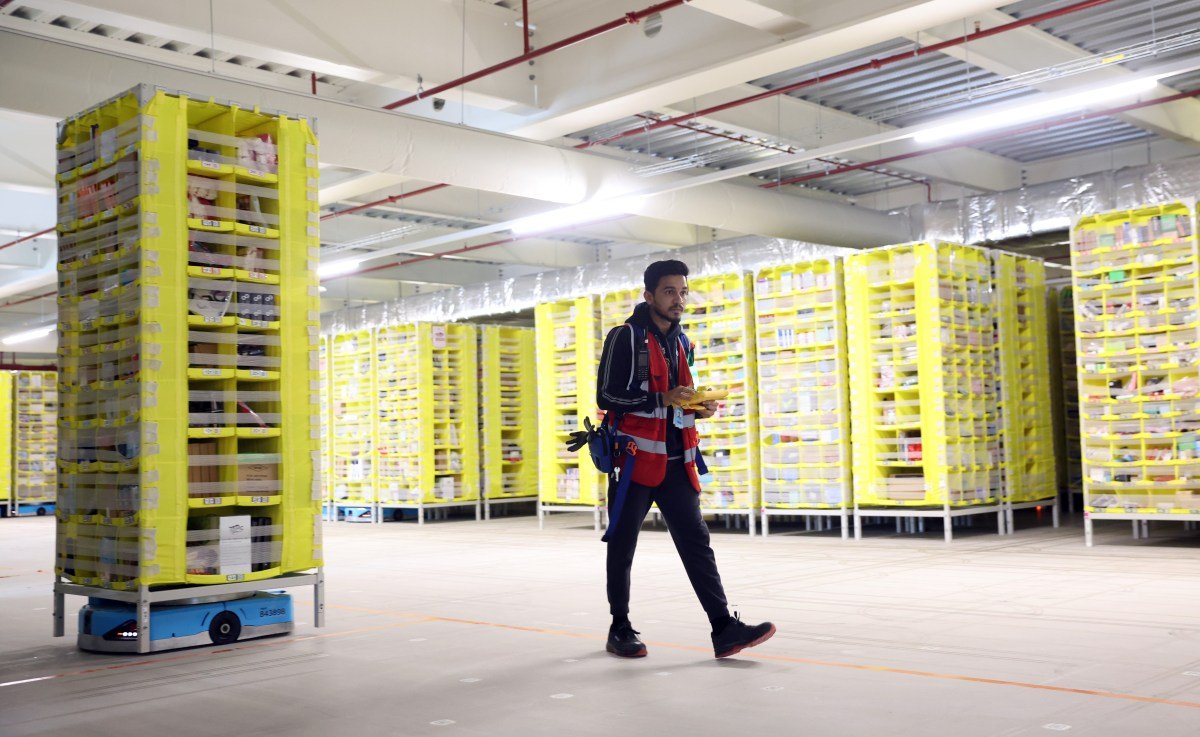France’s data privacy watchdog, the CNIL, has issued a staggering fine of €32 million or $35 million in today’s exchange rate to Amazon’s logistics subsidiary, Amazon France Logistique. The CNIL has found that the company has implemented an excessive and invasive “surveillance system.”
In their investigation, the CNIL has focused on Amazon’s use of warehouse barcode scanners and their data collection methods for connected devices. The process involves an Amazon employee scanning a product with a connected scanner and placing it in a crate for shipping. These scanners are also used for storing new items in the warehouse.
“Indicators tracking the inactivity time of employees’ scanners were put in place.”
“The CNIL ruled that it was illegal to set up a system measuring work interruptions with such accuracy, potentially requiring employees to justify every break or interruption,” the French regulator wrote.
The CNIL has specifically deemed two indicators, the “idle time” and “latency under ten minutes,” as illegal for data processing purposes under GDPR laws. The “idle time” measures any scanner downtime of ten minutes or more, while the “latency under ten minutes” tracks interruptions between one and ten minutes. According to the CNIL, these methods are excessively intrusive and violate GDPR regulations.
Amazon has also implemented an indicator called the “stow machine gun” to prevent double-scanning errors. However, the CNIL has stated this method is also in violation of GDPR laws.
“Again, it’s worth pointing out that the CNIL is listing some data processing wrongdoings. This isn’t a labor case, it’s a data processing case about illegitimate and excessive monitoring of the warehouse workers,” the CNIL wrote.
The French regulator has also criticized Amazon’s data retention policies, stating they are excessive and unnecessary. Amazon’s warehouse performance data is kept for all employees and temporary workers for a period of 31 days. The CNIL has deemed this as excessive and unnecessary.
“More generally, the CNIL considered excessive to keep all the data collected by the system, as well as the resulting statistical indicators, for all employees and temporary workers, for a period of 31 days,” the French regulator wrote.
Amazon’s Response
Amazon has responded to the CNIL’s fine with a lengthy statement in which they strongly disagree with the CNIL’s conclusions. The company states that the CNIL’s findings are incorrect and they may appeal the decision.
Amazon’s first argument is that they are not the only company in the logistics industry using a connected warehouse management system. The company claims that this system helps with load balancing between various warehouses and teams.
“If we are facing an order peak, our systems will help us adapt the workload between teams so that we can keep processing orders in a safe and efficient manner,” Amazon wrote.
Amazon has also stated that the “stow machine gun” indicator was created to ensure products are not damaged before being stored, and they will now disable this feature. In addition, they will extend the threshold limit for the “idle time” metric from 10 minutes to 30 minutes.








